
Collaborative stewardship with Mi'kmaq Earth Keepers of Nova Scotia
Sable Island National Park Reserve
Parks Canada and the Mi’kmaq Earth Keepers of Nova Scotia have been working together to learn about and monitor the Sable Island Sweat Bee at Sable Island National Park Reserve since 2021.
This work facilitates an invaluable opportunity for growth, including re-establishing connections to land, growing relationships, and working towards a collaborative approach to stewardship on this special island in the Atlantic.
Being on Sable Island was an experience I find nearly impossible to put into words…Sable has gifted me with an immensity of gratitude, love, respect and wonder for the natural world within our home of Mi’kma’ki and I am forever grateful.
It is a shared goal that we will be able to establish an ongoing partnership with Parks Canada so that more L’nu’k will have this experience in the future.
Sweat bees and stories
Transcript
[A Parks Canada employee points to a plastic tube containing a Sable Island sweat bee on camera.]
[Dan] There she is.[Parks Canada beaver logo]
[Mi’kmaq Earth Keepers walk through tall grass on Sable Island. A large flock of birds fly through the air above the Sable Island Institute. Earth Keepers examine sweat bees and look for sweat bee nests.]
[Text: Field Notes, Sweat Bees & Stories, Sable Island National Park Reserve]
[Lenley stands in front of the Sable Island research centre, speaking directly into the camera.]
[Lenley] Kwe from Sable Island.[Name Tag: Lenley Melvin, Species at Risk Project Assistant, Mi’kmaq Earth Keeper]
My name is Lenley, I'm from Annapolis Valley First Nation, I'm an Earth Keeper.I'm here on Sable Island looking for sweat bee nests.
And it's not as easy as you think it might be... get it, bee?
[Dan and Cheyenne stand on the beach, speaking directly into the camera]
[Name Tag: Dan Kehler, Park Ecologist, Sable Island National Park Reserve]
[Dan] Hi, I'm Dan Kehler, the park ecologist for Sable Island National Park Reserve.[Name Tag: Cheyenne MacDonald, Agriculture and Climate Manager, Mi’kmaq Earth Keeper.]
[Cheyenne] Kwe, teluisi Cheyenne McDonald, Mi'kmaq First Nation.I'm here representing the Confederacy of Mainland Mi'kmaq, and we're here to study the Sable Island Sweat Bee.
[Illustrated map of Atlantic Canada appears. A small box appears off the coast, identifying Sable Island. The map zooms in and a label appears below the island, indicating that it is approximately 43 km in length].
[Sand blows across sand dunes and wild horses stand in tall grass on a windy day.]
[Text: Sable Island is a sandbar located 175 km from the Nova Scotia mainland. It’s home to the endemic, at-risk Sable Island Sweat Bee.]
[Mi’kmaq Earth Keepers arrive on the island by plane and head to their accommodation via side-by-side.]
[Text: Four Mi’kmaq Earth Keepers travelled to Sable Island on a week-long research trip to study the Sweat Bee and share knowledge with Parks Canada scientists.]
[Earth Keepers and Parks Canada staff chat while standing on the ocean shore. Wild horses walk along the beach. Seals float in the blue water along the shore.]
[Dan speaks into the camera.]
[Dan] The story of the Sable Island sweat bee is pretty cool,because it was only discovered about 10 years ago.
[An illustration of a Sable Island Sweat Bee appears, identifying unique features.]
Thanks to a researcher who was looking at all these collected bees in museums, including bees that were collected here on Sable Island in the 70s. Through their detailed analysis, and also looking at some DNA barcoding, they were able to differentiate the bees from Sable Island into a separate species.[Scenic shots of grass blowing in the wind on the island, the sun setting, and many birds flying.]
And now we consider it an endemic species to Sable Island. That means it's found only here, and because of that it's a species at risk.[Anoogwa speaks directly into the camera.]
[Anoogwa] So here we are, we found some more bees.[Name Tag: Anoogwa Pictou, Species at Risk Project Assistant, Mi’kmaq Earth Keeper]
[Anoogwa flips the camera around to show the grass and a bee sitting on a dandelion.]
If the wind will cooperate with us…[Text: Sable Island Sweat Bee]
[Anoogwa speaks directly into the camera.]
So what we're doing is we're trying to find out where they are and where they nest, and then we're going to further study them.[Dan kneels on the ground and gestures toward a plantain in the sand. Earth Keepers crouch down, searching for bee nests among the grass.]
[Dan] I just saw a bee go in this area under the plantain. When they come out, they'll do an orientation flight, buzz around, that way they get all the landmarks, and then go forage and come back. So that we can keep track of them, I'm going to put this washer right on top of where I think she went in,[Dan places a metal washer on top of the bee nest.]
and it's labeled so we'll be able to track how many nests we find in this area. Very cool.[Anoogwa holds up a small plastic container containing a bee.]
[Anoogwa] I came to the conclusion that we should call them stubborn bees,because they're really hard to find.
[Parks Canada staff and Earth Keepers sit in the grass, searching for sweat bee nests.]
[Dan] We are at the one living tree on Sable Island, the last tree from a tree-planting effort, and just around this tree, we've struck gold. We've got four nests so far,[Cheyenne examines a sweat bee using a magnifying glass and Earth Keepers place washers overtop of the nests.]
looks like we're going to find quite a few more here. And it's a super nice day for bees.[A mix of running shoes and moccasins are strewn around the entryway. The Earth Keepers and Parks Canada staff further examine the bees that they’ve captured inside the research centre.]
We just brought one of the bees we caught back to the lab. We need the stereoscope to see the pattern on the thorax really well; that's the only way we can identify them in the field, so to speak.[Name Tag: Charlotte Denny, Unama’ki Institute of Natural Resources, Mi’kmaq Earth Keeper]
[Grass on sand dunes blows in the wind. Waves crash on the beach. Birds fly through the air.]
[Lenley speaks directly into the camera.]
[Lenley] I just wanted to give my Indigenous perspective, being L'nu Mi'kmaq, of my reflection on my time here on Sable Island.[Dan walks along the beach, waves crashing at his feet.]
I didn't know what to expect when I first came out, I heard people try to explain their experiences to me, and I didn't quite understand. They told me that I wouldn't get it[Aerial photos of Sable Island flash across the screen.]
until I was here, and now I get it.Sable Island seems to have an energy that is more natural
[Images of bird eggs in a nest on the sand, wild horses walking along the beach, Charlotte standing in the sand with sand dunes in the background.]
than the mainland or anywhere else I've been. It has a slow, steady, consistent rhythm. The way that Sable Island has affected me spiritually... I think I found myself here. I discovered who I was... or who I am.[Dan, Lenley and Cheyenne stand together in the kitchen at the research centre. Cheyenne is making bread.]
[Text: Making four cents, a traditional Mi’kmaq bread]
It's something I think that every L'nu person should experience.
[Earth Keepers and a Parks Canada staff member converse beside a pond.]
I'm really hoping that I'll be able to come back again.
Wela'lin, wela'lioq.
[The Earth Keepers lead up into a small plane to head back to the mainland.]
[All] Bye! Ne'multes! We’ll miss you![Text: By collaborating with Mi’kmaq Earth Keepers, Parks Canada is able to integrate valuable traditional knowledge and contemporary insight to its conservation work, as well as strengthening connections with Mi’kmaq communities.]
[Text: Through this work, sweat bee nests have been found at several new locations, and our understanding of this remarkable species deepens each year.]
[Text: Sable Island is on the ancestral and unceded territory of the Mi’kmaq.]
[Parks Canada branding]
[Canada wordmark.]
[Government of Canada song]
On this page
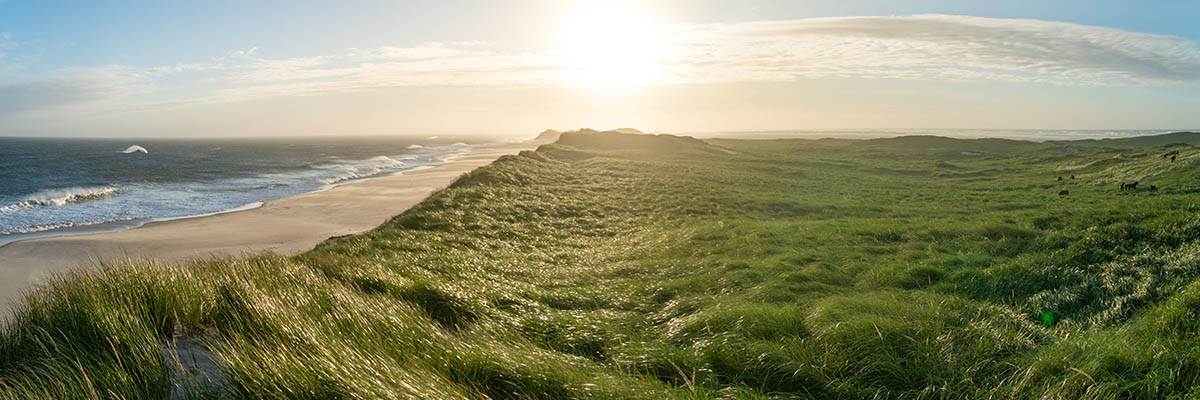
Connection to the land
Sable Island is a thin crescent of shifting sand located in the Atlantic Ocean, 290 km southeast of Kjipuktuk aq Mi’kma’ki (Halifax, Nova Scotia). Established in 2013, Sable Island National Park Reserve is part of the unceded traditional territory of the Mi’kmaq of Nova Scotia and its designation as a national park reserve reflects an outstanding asserted claim by the Mi'kmaq of Nova Scotia to the island.
I am Mi’kmaw and I hold an ancestral connection to the land. I have a place and a belonging on the land. I still honor our treaties with the non-human beings that live there. How do my actions affect the terns, grey seals, or horses? This is the question I was holding while on the island, and question I still hold today.
It's important for my people to connect with all the lands of Mi’kma’ki. This includes Sable Island, which is untainted and untamed. I was blown away by the peace and tranquility of the island in its natural state.
On the first day, I led a smudge ceremony and spirit plate offering with my fellow Mi’kmaq Earth Keepers and Parks Canada employees. These prayer offerings were to first, introduce ourselves to the spirits that dwell on Sable Island, and secondly, state our intentions while we were conducting surveys. We came to Sable Island not to hunt, but to gather data. We promised to respect every living plant, animal and bird while working on the island. This ceremony not only connected us to the land but also connected us to each other as we began our Two-Eyed Seeing approach in a good way.
I cannot think of a better, safer place to re-connect with the land and one other.
Sable Island has its own life, its own life force, and its own aura spirit. The spirit of the island is very healthy and very vibrant. Everything flows within its own ecosystem. There's life and death everywhere. From point to point, the island is always evolving and changing.
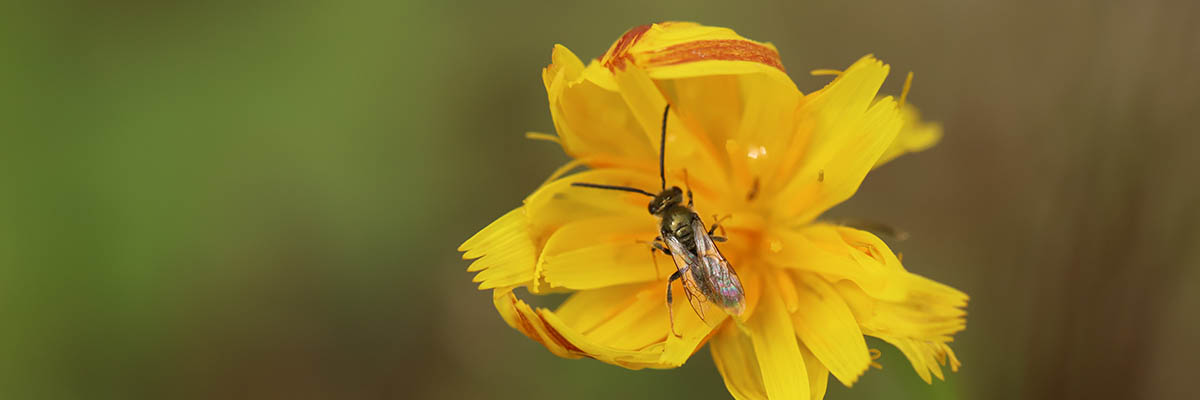
The Sable Island Sweat Bee – an endemic species
The Sable Island Sweat Bee (Lasioglossum sabelnse) was first identified in 2009. While many different species of sweat bee exist worldwide, this species is endemic to Sable Island National Park Reserve. This means it is found on Sable Island and nowhere else in the world! For this reason, the Sable Island Sweat Bee is listed as Threatened under the Species at Risk Act, and Parks Canada is committed to protecting this unique species and maintaining a stable population.
We know how important pollinators are in our ecosystems and the importance of making sure they are able to thrive in the health of those ecosystems. I have bees and I grow vegetables, and those bees are helpers for me and help everything to flourish. It was a very humbling experience to be able to work with the pollinators on Sable Island: to know that even when we are not there, they are doing work that needs to be done, and we rely on it.
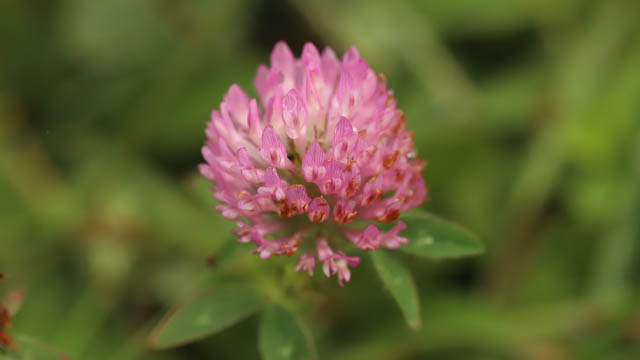
Why are pollinators important?
Pollination is the process of moving pollen between male and female plants to support seed and flower growth. Pollinators – living creatures that help move the pollen – are therefore vital to the health and wellbeing of planet earth.
One pollinator many people are familiar with is the bee, and scientists worldwide are learning new things about these important insects on a regular basis.
Learn more about the Sable Island Sweat Bee
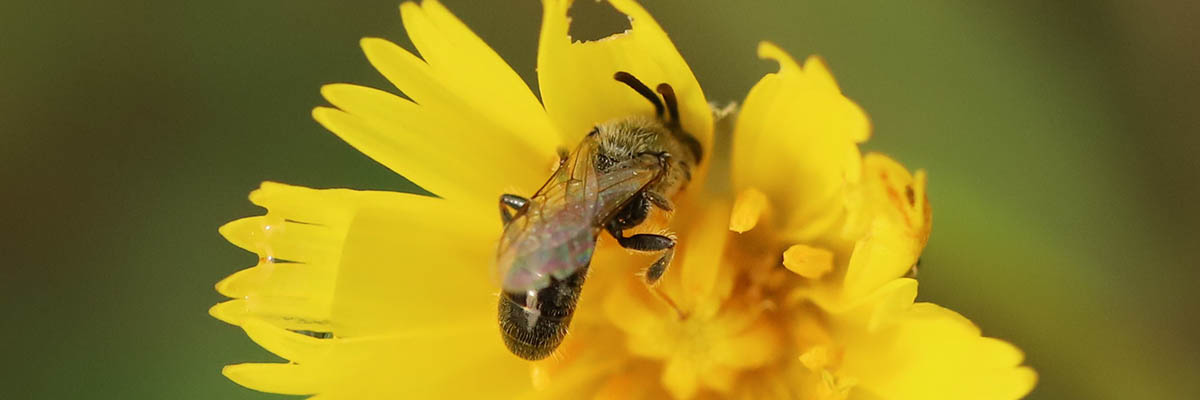
Growing relationships with Mi'kmaq
Parks Canada realized very little was known about the Sable Island Sweat Bee and reached out to various groups in search of expertise and support in learning more. At the same time, Mi’kmaq Earth Keepers of Nova Scotia were carrying out a variety of work with native pollinators throughout the province.
Collaborating and learning about this new species through a Two Eyed Seeing approach was of great interest to both the Mi’kmaq and the Sable Island National Park Reserve team, and an important relationship with the Mi’kmaq Earth Keepers was born.
Two Eyed Seeing
The Two Eyed Seeing principle encourages us to look at Indigenous ways of knowing with one eye and western knowledge with the other, which in turn helps us to see and act in new ways that benefit everyone.
~ Drawn from the teachings of Mi’kmaq Elder Albert Marshall, Minister’s Round Table
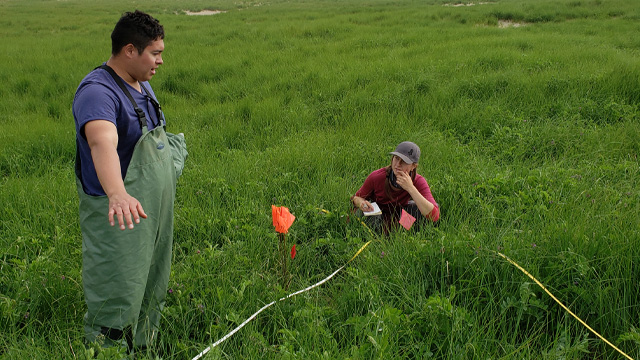
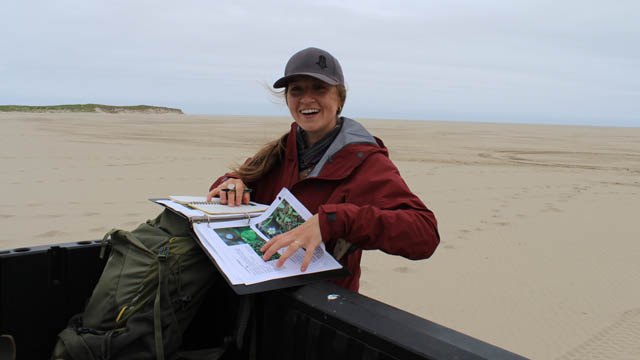
Mi'kmaq Earth Keepers
Mi’kmaq Earth Keepers assist Nova Scotia Mi’kmaw communities in natural resource management and Traditional Mi’kmaq Knowledge, and support partner organizations throughout the province in developing on-the-land monitoring programs based on Two Eyed Seeing. In 2021, the first group of Mi’kmaq Earth Keepers visited Sable Island National Park Reserve.
It felt like a new relationship had begun. I was curious about how my ancestors may have interacted with this place: how we may have gotten here, what we would have done here, and what kind of relationship we had with our non-human relatives that reside here, such as the grey seals, the Sable Island Sweat Bees, and the terns. As a Mi’kmaw, I felt a sense of responsibility to be able to re-establish that connection in the unique way we were able to do [while on the island].
It's important for the Mi’kmaq to see the purity, the awe-inspiring calmness, and spirit of the island. For instance, we get to see the seagulls in a natural environment in comparison to the seagulls in rural areas on the mainland. This is the type of untainted, wild nature that would have been seen by my people prior to contact. It connects me to all my relations because that's the kind of world they were living in. They saw this wild and raw beauty of nature every day. For me to go to Sable Island and have experienced a little bit of my ancestor’s lifestyle, that was the thing that moved me the most.
[On Sable Island], you find peace within yourself, because you disconnect from the mainstream world. You go there and there's nothing: no loud noises, like traffic, and no streetlights bothering you. It's a hard reset to your life, and it helps you to reset your own clock. You're there and you can let go what's on your mind. I found [our visit] was more of a spiritual connection to the island.
Sable Island Sweat Bee
Transcript
There are no spoken words in this video.
Animated Parks Canada beaver logo.
The Sable Island Sweat Bee slowly emerges from a very small hole in the ground.
The Sable Island Sweat Bee flies away.
Parks Canada logo.
Canada wordmark.
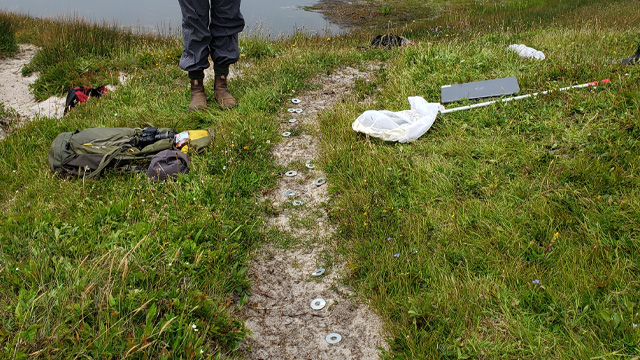
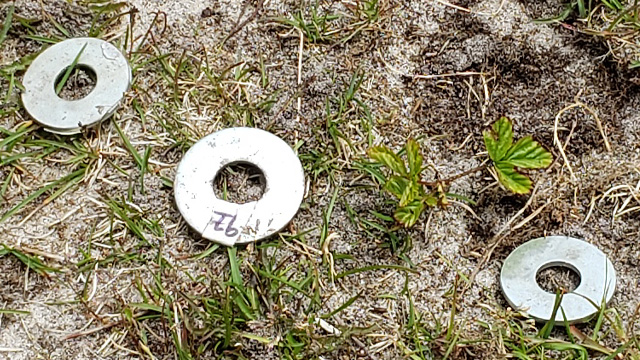
Studying the Sable Island Sweat Bee
Through field research, Earth Keepers and Parks Canada have been learning about the Sable Island Sweat Bee.
Sweat bees nest in the ground. They enter and exit their nests through very tiny holes, about 2mm in width or the size of a pin head. Searching for the bees and their nests is challenging work, and it takes a lot of person power and patience.
First, the team looks for suitable habitat where a variety of bees are already active. Then, they spread out and watch for bees entering and exiting the ground. If a sweat bee is spotted entering or exiting the ground, a nest location can be confirmed.
Sable Island Sweat Bee nests have been found at several locations on the island and data collected has revealed important clues about the bees’ social structure and nesting habits.
Sable Island is such a small and fragile ecosystem that it felt like we were able to see the bigger picture under a microscope. Performing research there felt very delicate as we were interacting with a fragile ecosystem that hosts at-risk species. It posed the question: how do we respect this place and also reclaim our place in it? It was a chance to develop an intimate relationship with one type of ecosystem, and that was very special for me: to study the Sable Island Sweat Bee and to have an intense interaction with the place. It was very empowering.
We know there's extensive research going into [the Sable Island Sweat Bee]. So, when we finally saw one come out of its nest and go back in – and we could properly identify it – that was a relief. It painted the picture of how important [this work] is and how much patience you must have.
The sweat bees are really important. [There are] flowers and medicines that grow on the island because of the relationship between the sweat bees and the horses… The horses provide the salts (perspiration) the sweat bees need to supplement their diet, and the horses eat some of the plants that bees pollinate. Together, they create an environment for many plants and insects to thrive on Sable Island.
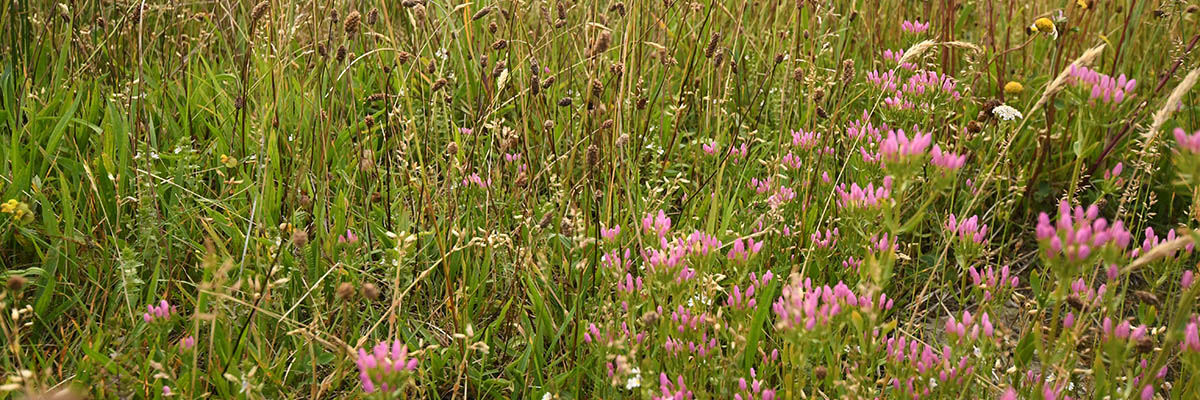
Stewarding the land
The Mi’kmaq Earth Keepers and Sable Island National Park Reserve team will continue to work together to learn from one another and to learn more about this important native pollinator, the Sable Island Sweat Bee.
Parks Canada recognizes the important roles and responsibilities the Mi’kmaw of Nova Scotia play in the protection and conservation of Sable Island National Park Reserve and are eager to help foster this renewed connection to the island.
The purpose of the Earth Keeper network and program is to re-establish and rekindle the connection between the Mi’kmaw people and their land, and our responsibility to steward the land. While I acknowledge and recognize that a lot of our community members do have a strong connection to land, I still feel like I am very disconnected from the land, the teachings, and the knowledge that comes with that.
As the former Earth Keeper Network Project Coordinator, I truly felt like what we [Mi’kmaw Earth Keepers and Parks Canada team] have is a collaboration. We were in balance [on Sable Island], which made the experience meaningful.
I see [this relationship] in a very positive forward momentum. The snowball has just been created and it's going to keep going; Mi’kmaw people are going to keep coming to this place. I see the future of Mi’kmaw people and Parks Canada coming to an agreement where we work with each other, restore the friendship, and maintain the spirit of the island. As much as we need the island, the island also needs us to speak up for it.
We have to work on future collaborations. There's a lot of work to be done on the island. I'd like for the Earth Keepers to be a part of [existing projects], but I [also] want to do a survey on the island's herbal medicines, for example. As Mi’kmaw guardians, we come to the island and we see things from a different perspective. That's important, especially as we're trying to use Two-Eyed Seeing [in this work].
My worldview as a Mi’kmaw person is that we are a part of these landscapes, not separate from them. We’ve become separated from the land, but we are a part of it and need to return to it. We are ready to look at governance and co-management, and these partnerships are very important in building capacity within our communities to do that.
We are building our capacity and returning to our rightful responsibilities as stewards of the land.
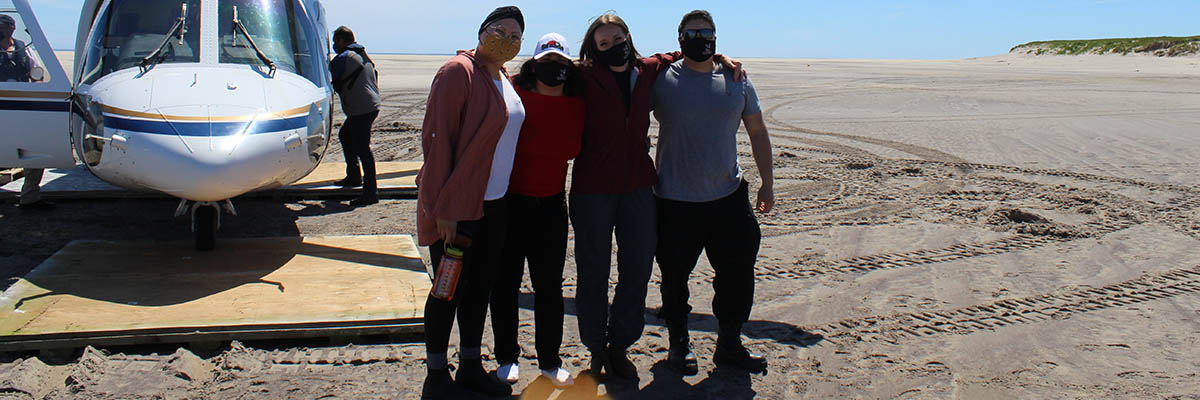
More information
Learn more about the Sable Island Sweat Bee
Sable Island Sweat Bee (Lasioglossum sablense): recovery strategy and action plan (proposed)
Related links
- Date modified :